|
A Bigger and Better House for the
Money
by Bob Brooke
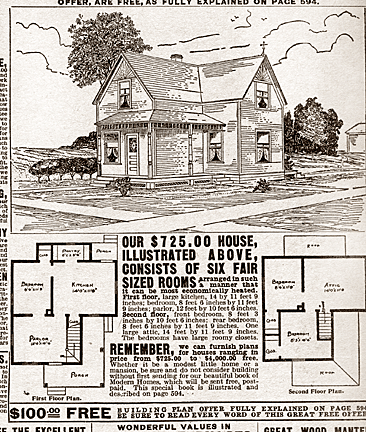 The
Sears Catalogue offered just about anything a homeowner could want or
need, including, the house, itself. Catalogue shoppers could order a
Sears kit house from 1908 to 1940. Customers purchased and built upwards
of 75,000 homes in 447 different designs during that period The
Sears Catalogue offered just about anything a homeowner could want or
need, including, the house, itself. Catalogue shoppers could order a
Sears kit house from 1908 to 1940. Customers purchased and built upwards
of 75,000 homes in 447 different designs during that period
Types of Sears Kit Houses
But Sears didn’t innovate home building. The company based its
blueprints on what was popular at the time, and while they weren’t the
first or only company to do mail-order houses, they were among the most
memorable because people could buy damn near anything in their 500+ page
Catalogues. Their Modern Homes kits, and even the home buying process
itself, were part of their Catalogue retail sales.
Called Sears Modern Homes, the company produced three different product
lines based on budget: high-end Honor Built homes, Standard Built homes
that were popular with young families, and Simplex low-budget homes that
were mostly used as vacation cottages.
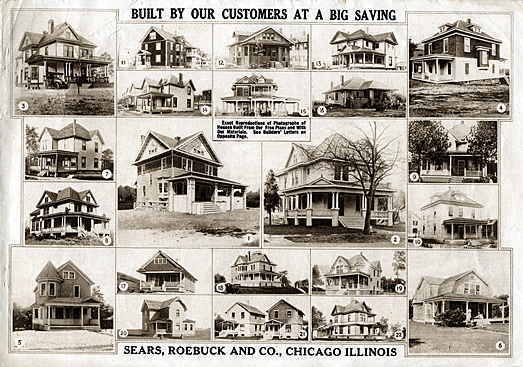
High-end Honor Built homes used the best quality materials that Sears
could source, These came with what at the time was state of the art
heating, plumbing, and electricity. While these features weren’t in
every single Sears home, they still set the stage for home builders to
realize what people wanted in their homes because of how much their
quality of life had improved. Honor Built Homes were sturdy and designed
for four-season living. They came with cypress siding, knot-free
flooring, and complete inside trim.
Standard Built Homes, on the other hand, were meant for warmer climates,
since they didn’t retain heat well.
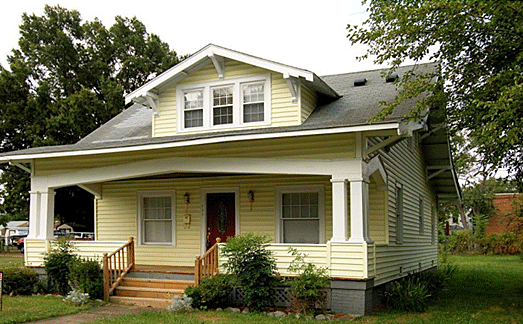
Sears designed Simplex Homes, designed primarily as summer cottages,
came with a basic plan that buyers could customize.
What Did Sears Kit Houses Include?
Sears kit houses arrived in 10,000 to 30,000 pieces, complete with a
75-page assembly book. The parts of the average house weighed about 25
tons and came in a boxcar. The invention of plasterboard and asphalt
shingles allowed customers to do much of the work themselves. Neighbors
often helped build some homes “barn-raising” style.
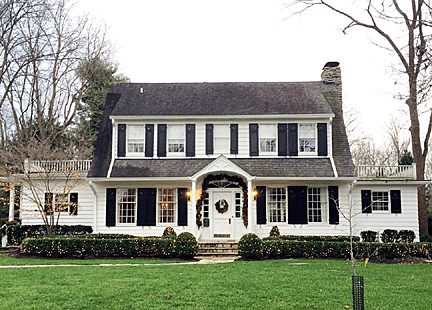 Designs
ranged from simple to elaborate, and styles included Colonial, American
Foursquare, Mission, Tudor, ranch and stone or shingle cottages. “The
Magnolia” was a 10-room, plantation-style Colonial home that sold from
1918 to 1922 for $5,140 to $5,972 while the simple Winona sold for $744
to $1,998. There are only six Winonas still standing and several have
been listed as historic landmarks. Designs
ranged from simple to elaborate, and styles included Colonial, American
Foursquare, Mission, Tudor, ranch and stone or shingle cottages. “The
Magnolia” was a 10-room, plantation-style Colonial home that sold from
1918 to 1922 for $5,140 to $5,972 while the simple Winona sold for $744
to $1,998. There are only six Winonas still standing and several have
been listed as historic landmarks.
Sears Modern Homes came
in all sizes and price points. Most ranged in price from several hundred
dollars to $3,500. And for those who needed it, Sears also provided
financing. All a future homeowner needed was a plot of land to build one
on.
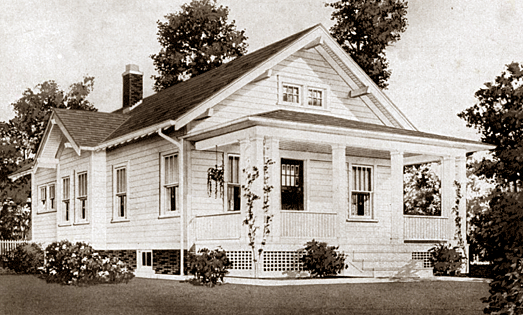
Today, prefab homes are accepted and commonplace. In fact, builders are
using factory-made trusses, windows, and such even more to help keep
costs at a reasonable level. Back when Sears sold kit houses, they were
the future , enabling many customers who couldn’t otherwise afford a
custom-built home to have one at a fraction of the cost.
Why Were Sears Kit Houses So Successful?
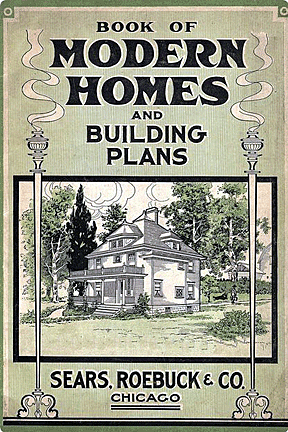 When
Sears began selling house building kits in 1908, it was just more
feasible to build a house pretty much anywhere because there just
weren’t as many homes because of the smaller population. When
Sears began selling house building kits in 1908, it was just more
feasible to build a house pretty much anywhere because there just
weren’t as many homes because of the smaller population.
During the first decade of the 20th century, there was a housing boom
taking place as people wanted to escape the crowds and disease of the
cities. Automobiles were still in their infant stages and the car
culture known today hadn’t yet arrived, but trains and trolleys began
extending to greener areas beyond towns and cities, making it possible
for people to visit or work in a city.
The large Victorian-style houses already there were few and far between
and out of reach of working class first-time home buyers. Sears realized
that quality housing that could be built easily was a must for the
quickly-growing population as World War I veterans came home and started
families, and immigrants flooded into the country.
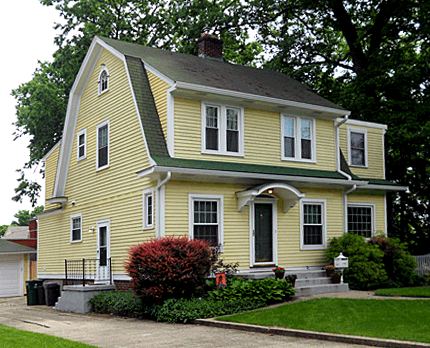 Freestanding
suburban or rural homes were more likely to stand alone in undeveloped
lots instead of planned tracts that were set aside by federal and state
governments and/or builders that had uniformity in mind. A Verona or
Wabash model home built in Pennsylvania could look just like the same as
one ordered and built in Missouri, but neither was designed to look
exactly like the other homes on the block. Freestanding
suburban or rural homes were more likely to stand alone in undeveloped
lots instead of planned tracts that were set aside by federal and state
governments and/or builders that had uniformity in mind. A Verona or
Wabash model home built in Pennsylvania could look just like the same as
one ordered and built in Missouri, but neither was designed to look
exactly like the other homes on the block.
Sears Modern Homes
offered a wide variety of styles for customers to choose from, ranging
from simple and rustic to luxuriously decadent. They weren’t all the
three-bedroom Craftsman ranchers seen in Los Angeles or the compact ones
that made up Levittown in southeastern Pennsylvania and Long Island. In
fact, the Chateau and Atlanta models were the forerunners of today’s
McMansions.
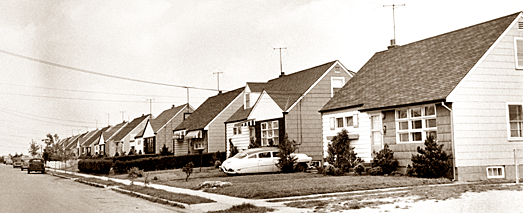
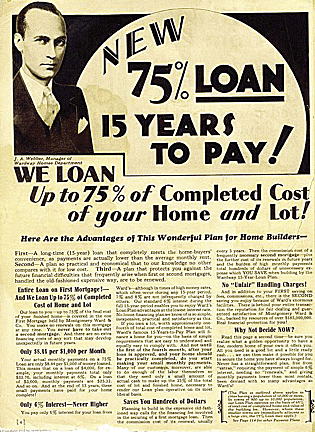 And
in keeping with Sears’ roots in selling to rural Midwesterners, they
even had a Catalogue for farmhouses, barns, and other farm buildings. And
in keeping with Sears’ roots in selling to rural Midwesterners, they
even had a Catalogue for farmhouses, barns, and other farm buildings.
Throughout the 1930s and 1940s, suburbs weren’t a common sight. Sears
could keep manufacturing costs down compared to standard builders and
competing catalogs because they had their own manufacturing facilities
by then and were able to mass-produce wood, asphalt, insulation
material, hardware, and everything else needed to produce a home.
In addition to keeping home building costs 40 percent lower than
traditional building, purchasers also had the option to bring their own
blueprints to Sears to get them modified for far less than going to a
builder or an architect. Customers could swap out certain elements and
more or less customize their new kit home.
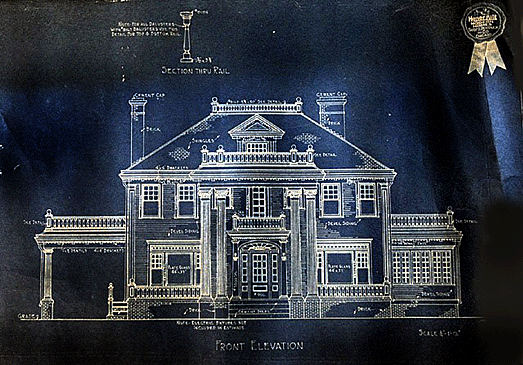
Sears also offered mortgages with liberal lending terms to home buyers,
which made them an attractive option for widows, the self-employed, and
people who otherwise had problems qualifying for traditional bank loans.
How Many Sears Houses Are Still Out
There?
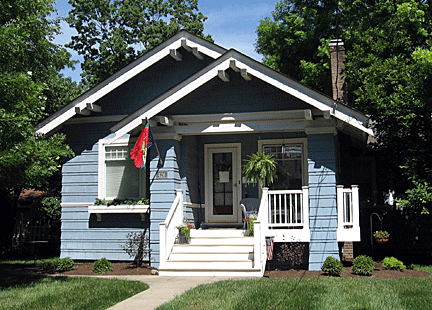 Of
the 70,000 to 75,000 Sears kit homes sold from 1908-1940, it’s estimated
around 70 percent of the original Sears homes built from kits are still
standing today. Of
the 70,000 to 75,000 Sears kit homes sold from 1908-1940, it’s estimated
around 70 percent of the original Sears homes built from kits are still
standing today.
Since Sears delivered their kit houses by railroad, they can be found as
far north as Canada and Alaska. Mostly, they can be found in places that
railroads served and where Sears factories played a major role in the
local economy, such as Cincinnati and former factory towns in the
Midwest—Michigan, Illinois, Ohio. Charleston, West Virginia also has
quite a few Sears homes.
For those homeowners who may wonder if their home is a Sears kit house,
there are a few things to look out for. Was the house built between 1908
and 1940? Does it have
stamped lumber in the basement or attic and shipping labels on the
baseboards and other millwork? And finally, does the deed and other
records of the home purchase list Sears as the architect? In addition,
because Sears also offered mortgages, did the previous owner have a
Sears mortgage or not? .
<
More Special Features
Next Article > |
